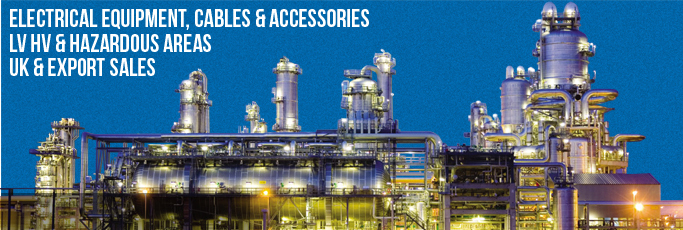
|
|
| home | contact | team t&d | group websites | markets | exports | blog |
 |
|
Flexicon Flexible Conduit - Low Fire Hazard (LFH) Performance
By Chris Dodds on 8th September, 2014
Low Fire Hazard (LFH) - LSF (low smoke and fume) and LSOH (low smoke zero halogen)
![]()
Low Fire Hazard (LFH) conduit systems are becoming an increasing part of the specification in many cabling applications. Public buildings, retail outlets, high rise office blocks, hospitals and transport installations - these are just a few of the instances where Low Fire Hazard products may be demanded.
Low Fire Hazard systems are required to protect personnel and property in the event of a fire and may be demanded by specifiers, occupiers, fire services or even insurers.
See: Flexicon Flexible Conduit - Low Fire Hazard (LFH) Performance
![]()
A Low Fire Hazard product has all of the following properties:
- Highly flame retardant - prevents a fire or limits its development if one does start
- Low smoke emission - to enable personnel to see their way to escape in the event of a fire
- Low toxicity - to ensure personnel are not overcome during their escape in the event of a fire
- Halogen free - rules out halogen acid gas emission and gives an indication of low smoke and low toxicity. Halogens are Fluorine, Chlorine, Bromine and Iodine
* All these four properties must be present to claim Low Fire Hazard (LFH)
Note:
Halogen free does not assure low smoke and low toxicity.
A low smoke and fume product may not be self-extinguishing let alone highly flame retardant. Ensure your supplier provides performance data on all four aspects of Low Fire Hazard performance.
![]()
Flexicon Conduits and Fittings Tests and Standards
- Flame Retardancy
Flame Retardancy BS EN IEC 61386 tests that the Flexicon conduits and fittings are self extinguishing. Vertical samples of conduit are subjected to a 1KW flame test. Flexicon fittings are subjected to a 750 degrees celsius glow wire test.
BS EN ISO 4589 determines the Limiting Oxygen Index (LOI) of a material. This is the percentage of oxygen in the air that would have to be present for the material to burn. Normal air contains 21% oxygen, BS 6853:1999, the UK code of practice for railway rolling stock requires 28% LOI for overground and 34% LOI for underground passenger carriages.
UL 94 is a UL (Underwriters Laboratories) standard to assess the flammability of materials. Classifications are HB, V2, V1 and V0 in order of increasing flame retardancy. UL 95 HB allows horizontal burning up to a certain rate, UL 94 V0 is highly flame retardant.
- Smoke Opacity
Smoke Opacity is evaluated by burning a known amount of product or material in a specified smoke chamber. A light is shone through the smoke and the loss in transmittance of light is measured over time.
- Toxicity
Toxicity is evaluated by burning a sample of material under known conditions. The fumes are analysed to find the volume of each gas that is given off. The volume of each gas is multiplied by its toxicity potency to give a toxicity index for the material.
- Low Fire Hazard Standards
All of the following standards assess flame retardancy, smoke emission and toxicity including halogen content.
BS6853 - UK rail rolling stock
LUL 1-085 - London Underground rolling stock and stations
NFF 16-101/2 - French rail rolling stock
DIN 5510 - German rail rolling stock
TS 45545 - New European rail rolling stock
AS/NZS 1530 - Australian/New Zealand rail rolling stock
Defence Standard 61-12 part 13 - UK Ministry of Defence
Flexicon Flexible Conduit Solutions and Fittings for Hazardous Area
- Further Reading
New LUL Approved Flexible Flexicon LTPLFH Low Fire Hazard Liquid Tight Conduit
Features & Benefits Of Flexicon Flexible Conduits & Fittings
Invitation
Thorne & Derrick are inviting you to join LinkedIn’s fastest growing Discussion Group : Low & High Voltage Power, Cabling, Jointing, & Hazardous Area Electricals (LV-HV).
Discussion subjects include cable installations, cable jointing, electrical substation, overhead line and electrical construction at LV, 11kV, 33kV and EHV.
Network, engage and promote your profile, company or products with over 10,000 influencers.
 | LFHU Flexicon Flexible Conduits - Galvanised Steel LFH Low Fire Hazard Conduit - See more at: http:/ |
Category: Flexible Conduit Cable Management
Sort by Category:
- #ThrowBackThursday
- 3M Scotch Tapes
- ABB Power Products
- Business
- Cable Accessories
- Cable Cleats & Cable Ties
- Cable Containment LV HV
- Cable Crimping & Cutting Tools
- Cable Jointer Training Courses
- Cable Jointing - PhotoBlog
- Cable Labelling & Marking
- Cable Laying & Cable Pulling
- Cable Transits & Duct Sealing
- Company Updates
- Earthing & Lightning Protection
- Electrical Equipment HV
- Electrical Equipment LV
- Electrical Safety & Arc Flash
- Exports
- Flexible Conduit Cable Management
- Hazardous Area Electricals & Lighting
- HV Cable Jointing & Terminating
- LV Cable Jointing & Terminating
- Nexans Euromold Cable Accessories
- Plugs & Sockets
- Power Distribution & Feeder Pillars
- Prysmian FP Cables
- PV Solar Farms
- Rail
- T&D History Blog
- Terms & Conditions of Sale & Purchase
Tweets by @ThorneanDerrick






























